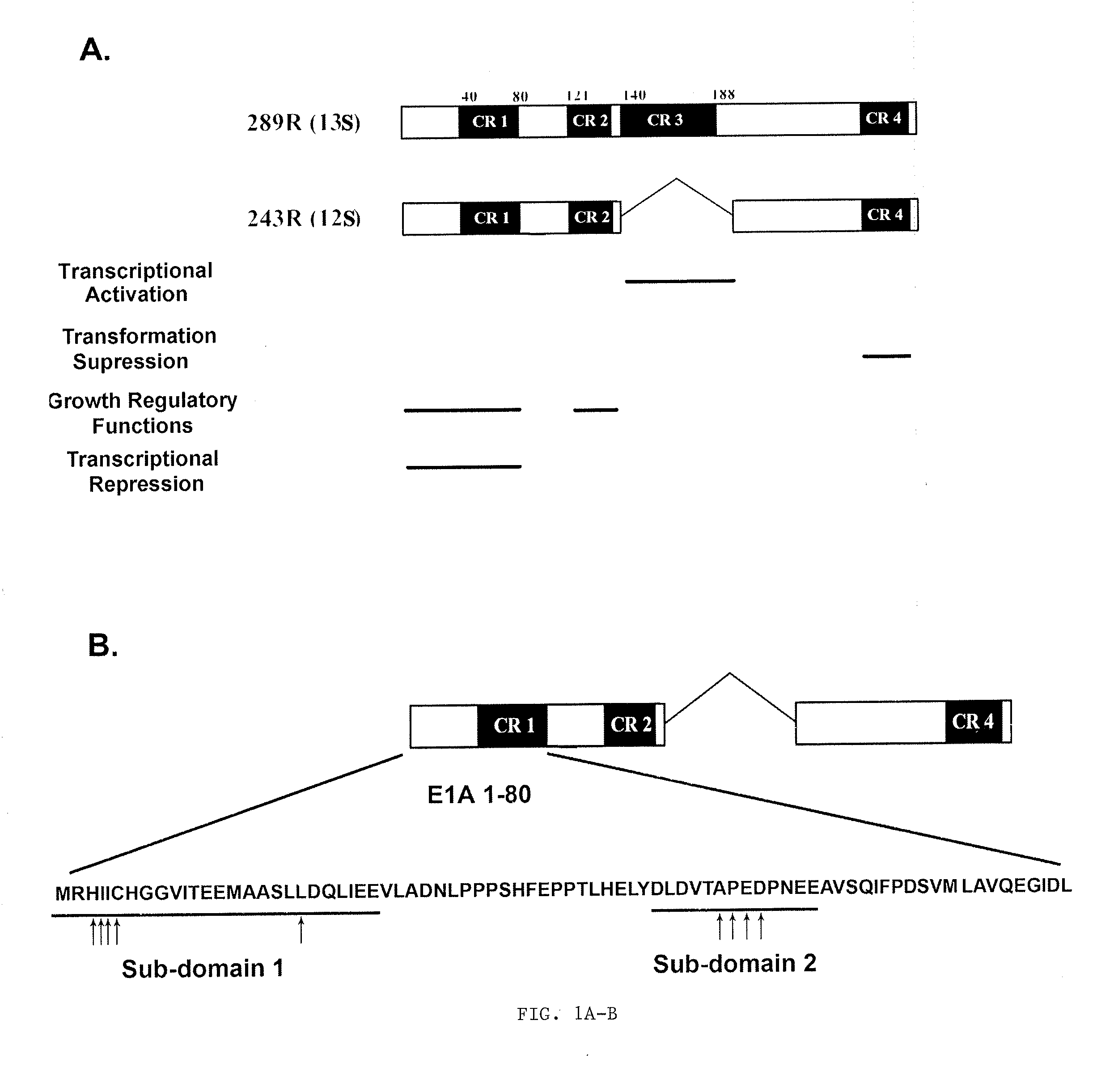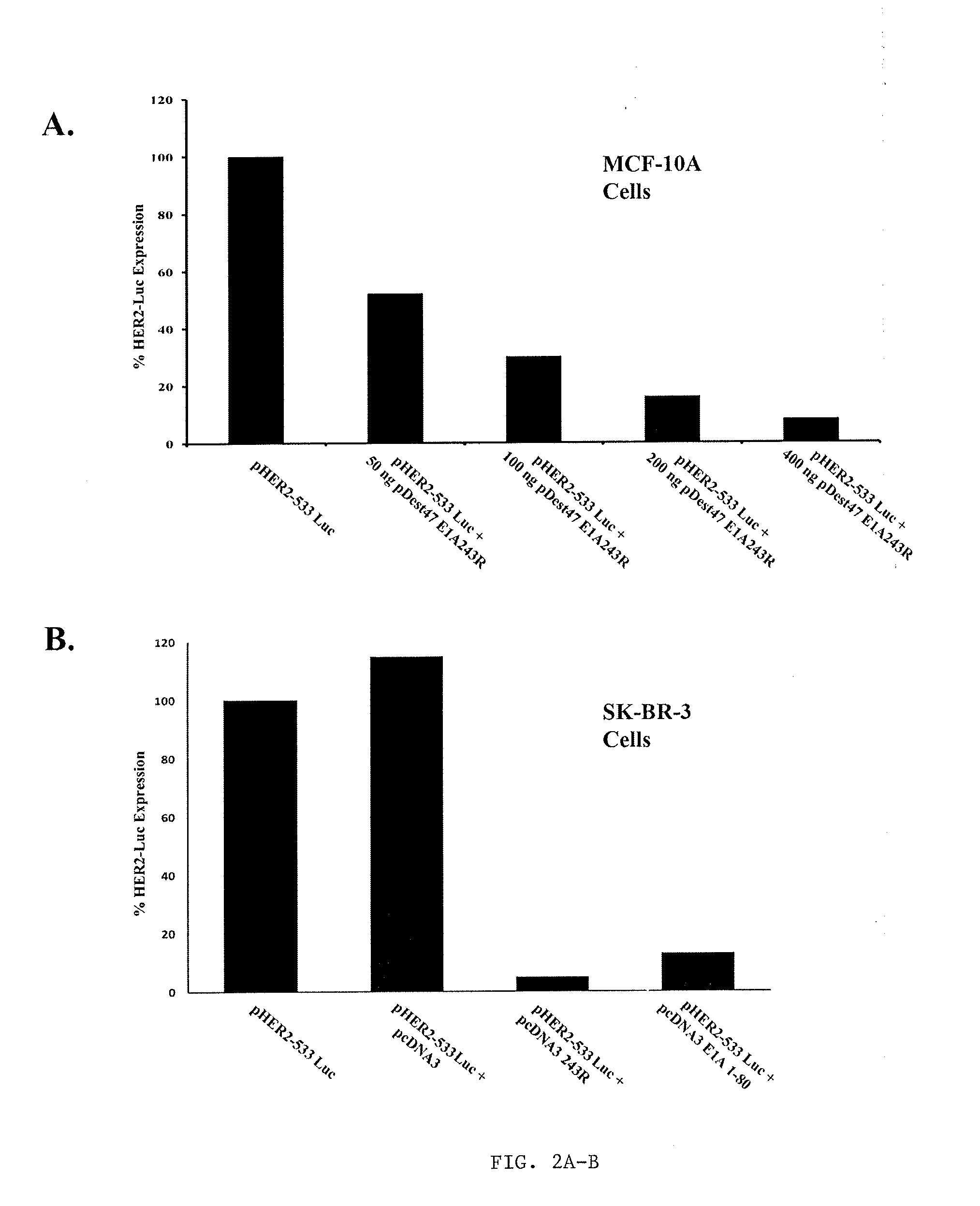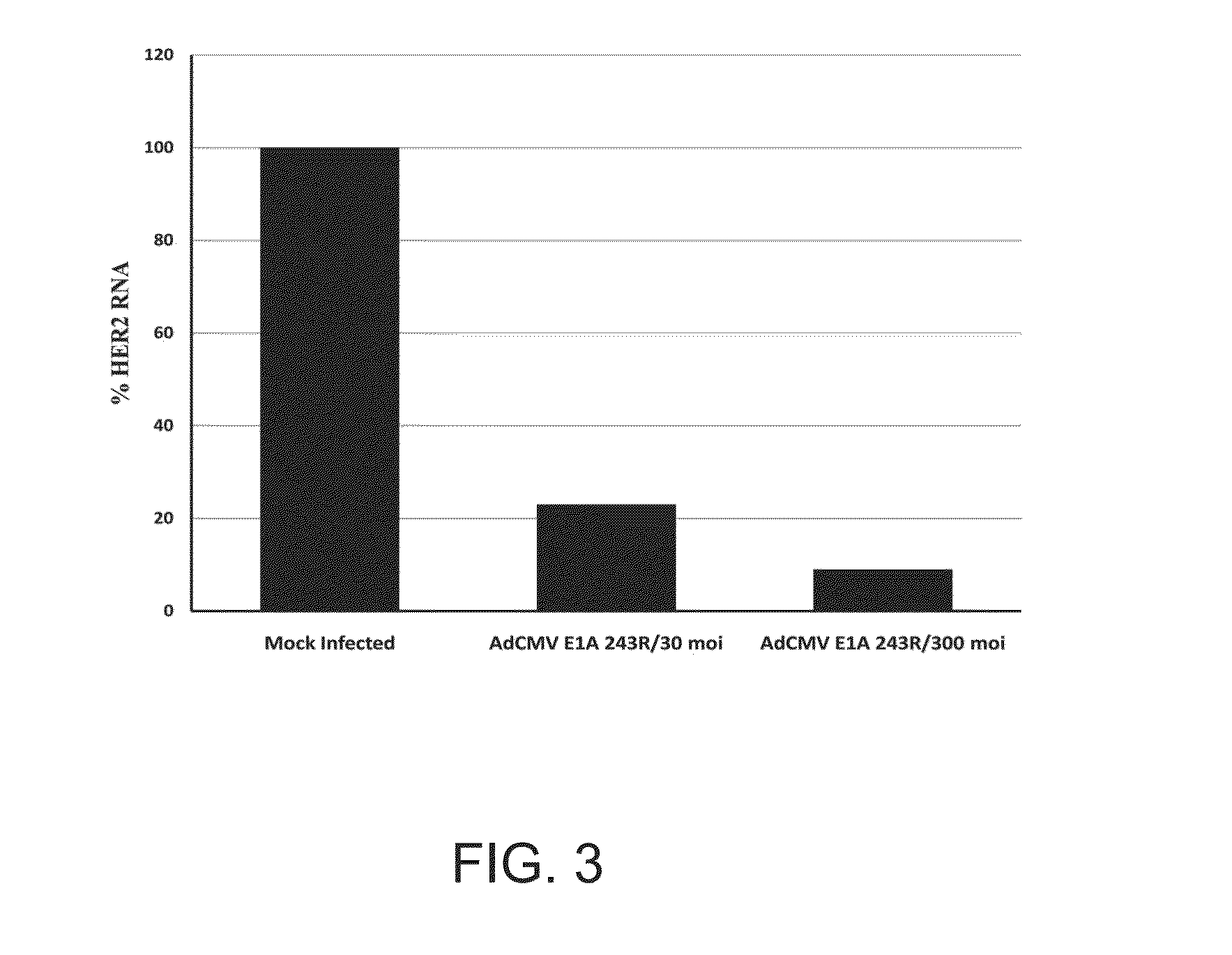Adenovirus E1A Fragments for Use in Anti-Cancer Therapies
a technology of adenovirus and e1a, which is applied in the field of oncology and molecular biology, can solve the problems of long-term deleterious effects, inability of this molecule to repress the expression of oncogenes such as her2/neu inside cancer cells, and unsuitable full length ad e1a oncogenes, so as to improve the quality of life of subjects and improve the survival of subjects.
- Summary
- Abstract
- Description
- Claims
- Application Information
AI Technical Summary
Benefits of technology
Problems solved by technology
Method used
Image
Examples
example 1
Materials & Methods
[0311]Plasmids and Transfections.
[0312]pHER2-533 expressing the luciferase gene driven by the HER2 promoter (Yu et al., 2002) was used as reporter. E1A 243R was PCR cloned into the expression vector pDest47 (Invitrogen) or E1A 243R and E1A 1-80 were PCR cloned into pcDNA3 (Invitrogen) using appropriate primers and pLE2 dl320, a plasmid containing genomic E1A with a splice-point mutation causing only 243R to be transcribed, as template (Green et al., 2008; Howe et al., 1990). MCF-10A (ATCC) cells were transfected in 24-well plates with a total of 500 ng of DNA using lipofectamine (Invitrogen) and the manufacturer's guidelines. SK-BR-3 (ATCC) cells in 60 mm2 cell culture dishes were transfected with a total of 1 μg of DNA using Fugene (Roche) and the manufacturer's guidelines. Cells were harvested 48 h post transfection and luciferase gene expression quantified after normalization against expression of a co-transfected non-E1A repressible RTL-luc using a Dual-Lucife...
example 2
Results
[0326]Expression of E1A can Transcriptionally Repress Exogenous and Endogenous HER2 Promoters.
[0327]In order to confirm that E1A 243R can repress HER2 expression in human breast cells, MCF-10A cells, which arose by spontaneous immortalization of normal breast epithelial cells (Soule et al., 1990), were co-transfected with a luciferase gene (luc) expressed from the HER2 promoter and with varying levels of a plasmid expressing E1A 243R. FIG. 2A demonstrates that expression from an exogenous HER2 promoter is repressed in a dose-dependent manner by E1A 243R.
[0328]A example of HER2 oncogene addiction in human breast cancer cells may be provided by SK-BR-3 cells. SK-BR-3 cells are frequently used as a model of HER2 up-regulation in human breast cancers because SK-BR-3 is amplified 4- to 8-fold for the HER2 gene and SK-BR-3 cells expresses about 128-fold higher levels of HER2RNA than normal breast fibroblasts (Clarke et al., 2000). Therefore, the inventors determined whether express...
example 3
Discussion
[0343]The data presented here show that E1A 243R, and more importantly the E1A 1-80 repression domain alone, can efficiently repress the expression of HER2 and when expressed in the HER2 up-regulated SK-BR-3 breast cancer cell line leads to cell death. SK-BR-3 cells were used as a prototype for human breast cancers dependent upon up-regulated HER2 oncogene for growth and survival. The fact that expression of the E1A transcription-repression domain efficiently kills these cells is consistent with the “Oncogene Addiction” hypothesis (Weinstein, 2002). This view holds that, at least in some cancers, once a tumor cell becomes dependent on the continued expression of an oncogene, interference with the expression or function of that oncogene can lead to a return to a normal phenotype or to apoptosis. Oncogenesis, however, is a continuing process that accumulates genetic and epigenetic abnormalities and it is entirely possible that a cancer cell may “evolve” beyond dependence on ...
PUM
| Property | Measurement | Unit |
|---|---|---|
| temperatures | aaaaa | aaaaa |
| delay time | aaaaa | aaaaa |
| delay time | aaaaa | aaaaa |
Abstract
Description
Claims
Application Information
 Login to View More
Login to View More - R&D
- Intellectual Property
- Life Sciences
- Materials
- Tech Scout
- Unparalleled Data Quality
- Higher Quality Content
- 60% Fewer Hallucinations
Browse by: Latest US Patents, China's latest patents, Technical Efficacy Thesaurus, Application Domain, Technology Topic, Popular Technical Reports.
© 2025 PatSnap. All rights reserved.Legal|Privacy policy|Modern Slavery Act Transparency Statement|Sitemap|About US| Contact US: help@patsnap.com



